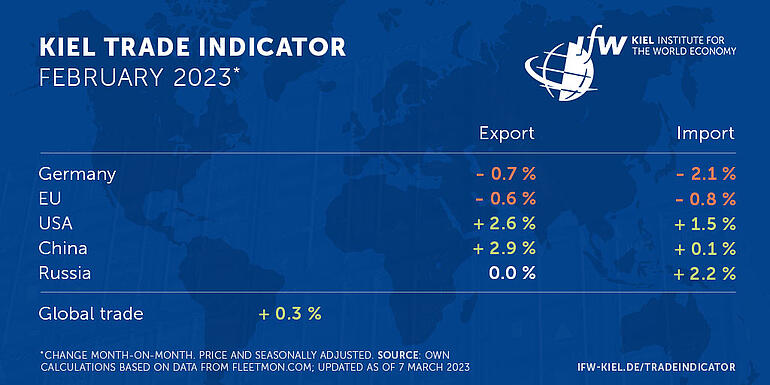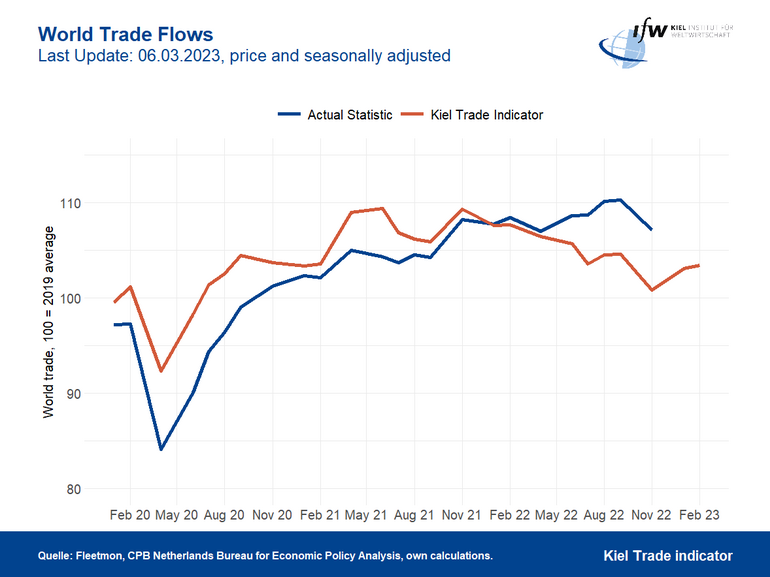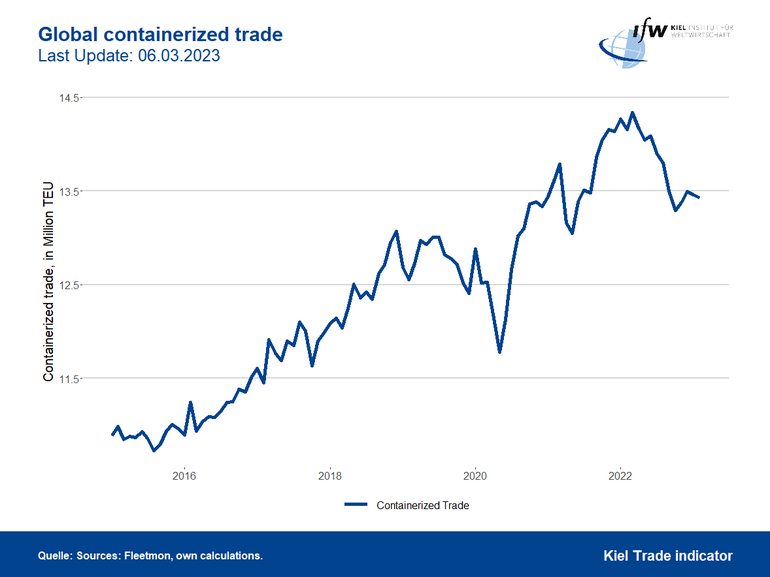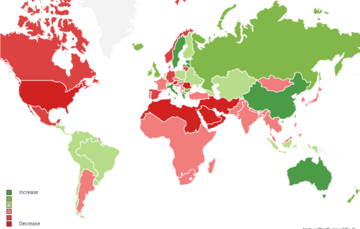News
World trade takes a breather

In February, global trade is able to defend its strong gains from January and, according to the latest update of the Kiel Trade Indicator, is likely to show a sideways movement with an increase of 0.3 percent (price and seasonally adjusted).
The figures for Germany's foreign trade are slightly negative for exports (-0.7 percent), but more clearly in the red for imports (-2.1 percent). For the EU, the decline in both exports (-0.6 percent) and imports (-0.8 percent) is only moderate.
"Looking at Germany, the negative values should be seen as a countermovement to the strong start to the year. On balance, the spring should be positive for German merchandise trade," says Vincent Stamer, Head of Kiel Trade Indicator.
For the U.S., the Kiel Trade Indicator signals increases in exports (+2.6 percent) and imports (+1.5 percent) in February compared with January. For China, thereare signs of an increase in exports (+2.9 percent) and a black zero for imports (+0.1 percent).
The indicator values for Russia show no change in exports (0 percent) and an increase in imports (+2.2 percent).
"The spring recovery in global trade in goods is confirmed in February. Despite some weaker figures than in the strong previous month of January, the overall positive momentum prevails and world trade is likely to take only a short breather," said Stamer.
Overall, price-adjusted global trade is now about 13 percent above the level before the outbreak of the COVID-19 pandemic.

By contrast, the container ship network has so far failed to recover from the winter downturn in global merchandise trade. The container shipping industry had previously profited from very high freight rates and a high workload.
"Maritime container trade slumped much more than trade itself during the economic downturn at the end of last year. Moreover, it was not yet able to benefit significantly from the recovery in world trade at the beginning of the year," says Stamer.

In February, the volume of standard containers shipped was around 13.5 million units, a good 6 percent below the previous peak of over 14 million units in March 2022.
"This is also due to the high freight rates last year. In the second half of 2022, fewer bulky goods such as furniture were shipped and more goods with a high value per kilogram, especially electronic items. This reduces the volume requirement and thus the number of containers," Stamer says.
"Only the market of bulk carriers was able to profit in the second half of the year. These cargo ships increasingly transported raw materials and, following the agreement between Ukraine and Russia, also grain again."
For more information on the Kiel Trade Indicator and forecasts for 75 countries and regions, visit www.ifw-kiel.de/tradeindicator.
The next update of the Kiel Trade Indicator will take place on March 21 (without media information) and on April 6 (with media information) for March trade data.

About the Kiel Trade Indicator
The Kiel Trade Indicator estimates trade flows (imports and exports) of 75 countries and regions worldwide, the EU and world trade as a whole. Specifically, the estimates cover over 50 individual countries as well as regions such as the EU, sub-Saharan Africa, North Africa, the Middle East or emerging Asia. It is based on the evaluation of ship movement data in real time. An algorithm programmed at the Kiel Institute uses artificial intelligence to analyze the data and translates the ship movements into real, seasonally adjusted growth figures compared with the previous month.
We update the data twice a month. Around the 20th (without press release) for the current and the following month and around the 5th (with press release) for the previous and the current month.
Arriving and departing ships are recorded for 500 ports worldwide. In addition, ship movements in 100 maritime regions are analyzed and the effective utilization of container ships is derived from draught information. Country-port correlations can be used to generate forecasts, even for countries without their own deep-sea ports.
Compared to previous leading trade indicators, the Kiel Trade Indicator is available much earlier, is much more comprehensive, relies on a uniquely large database using big data, and has a low statistical error by comparison. The algorithm of the Kiel Trade Indicator uses machine learning, so that the quality of the forecast continues to improve over time.
